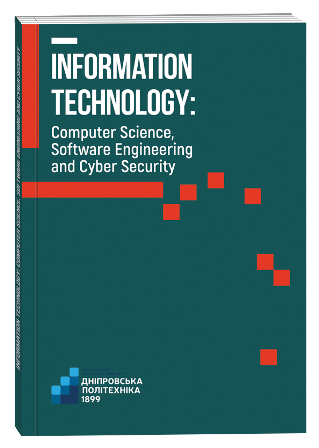STUDY OF THE IMPACT OF QUANTUM COMPUTING ON STEGANOGRAPHY
DOI:
https://doi.org/10.32782/IT/2025-1-3Keywords:
quantum computing, quantum technologies, steganography, steganographic methods, cryptographic algorithms, information security, protection of e-commerce systems.Abstract
With the advent of quantum computing technologies, which have the potential to compute at a much higher speed than classical computers, classical steganography faces new threats that make it difficult to hide information. At the same time, it stimulates the development of new approaches, such as post-quantum steganography, which takes into account the potential of quantum computing. But, it turns out that quantum computing has the potential to radically change many aspects of cryptography, and steganography, which is used to hide information, could also be affected. Purpose of the work. Analysis of the features of the impact of the most famous implementation of quantum cryptography, such as Quantum Key Distribution (Quantum Key Distribution for the development of recommendations for increasing the efficiency of steganographic methods. Research methodology. To study the impact of quantum computing on steganography, the application of various methods is considered, depending on the specific goals of the study and available resources, namely: mathematical modeling of steganographic algorithms, analysis of vulnerabilities to quantum algorithms, development of quantum attacks on steganographic methods, and others. Scientific novelty. The authors of this issue identified the main cryptographic systems that provide information protection in the face of quantum threats, including the features of quantum cryptography. The main features of quantum computing are also given, such as superposition, entanglement, and coherence. As the results of the study may be as follows. Finally, it should be noted that the threats that arise as a result of the development of quantum technologies require urgent adaptation and implementation of new standards in the field of information security. The integration of QKD and steganography is a promising area that could find applications in secure communications, particularly in diplomacy, defense and private relations. Conclusions. Quantum mechanics offers a high level of randomness that can be used to improve the reliability of hiding information at the expense of the advantages of quantum random noise. This allows for more detectionresistant steganographic systems. Potential areas for further research may be: the study of the integration of quantum methods with classical steganography; analysis of the safety of steganographic methods in the post-quantum period; development of quantum steganography protocols; Assessing the impact of quantum noise on information concealment and detection to protect e-commerce systems.
References
Nielsen M. A., Chuang I. L. Quantum Computation and Quantum Information. Cambridge University Press. 2010. 256 p.
Shor P. W. Scheme for reducing decoherence in quantum computer memory. Physical Review A, 1995. 52(4), R2493-R2496. 320 p.
Steane A. M. Error Correcting Codes in Quantum Theory. Physical Review Letters, 1996. 77(5), P. 793–797.
Bennett C. H., Brassard G. Quantum Cryptography: Public key distribution and coin tossing. Proceedings of IEEE International Conference on Computers, Systems and Signal Processing, Bangalore, India, 1984. 498 p.
Gottesman D. An Introduction to Quantum Error Correction and Fault-Tolerant Quantum Computation. arXiv preprint quant-ph/0904.2557. 2009. 420p.
Raussendorf R., Harrington J. Fault-tolerant quantum computation with high threshold in two dimensions. Physical Review Letters, 2007. 98 (19), 190504, 2007.
Preskill J. Quantum Computing in the NISQ era and beyond. Quantum, 2018. № 2, P. 79–87.
Qiskit Textbook. IBM Quantum Team, 2023. URL: https://www.ibm.com/quantum/qiskit
Broadbent A., Fitzsimons J., Kashefi E. Universal blind quantum computation. Proceedings of the 50th Annual IEEE Symposium on Foundations of Computer Science, 2019. № 3, 400 p.
Ekert A. K. Quantum cryptography based on Bell’s theorem. Physical Review Letters, 1991. 67(6), 661–663.
DiVincenzo D. P. The Physical Implementation of Quantum Computation. Fortschritte der Physik, 2020. 48(9–11), P. 771–783.
Новиков Д., Полторак В. Технології постквантової криптографії. Адаптивні автоматичні системи контролю. 2023. №. 1(42). C.171–183.
Бойко Н, Левицький Б. Алгоритми тренування та оцінки моделей машинного навчання для структурованого набору даних. Information Technology: Computer Science, Software Engineering and Cyber Security.2023, № 3, С. 3–12.







